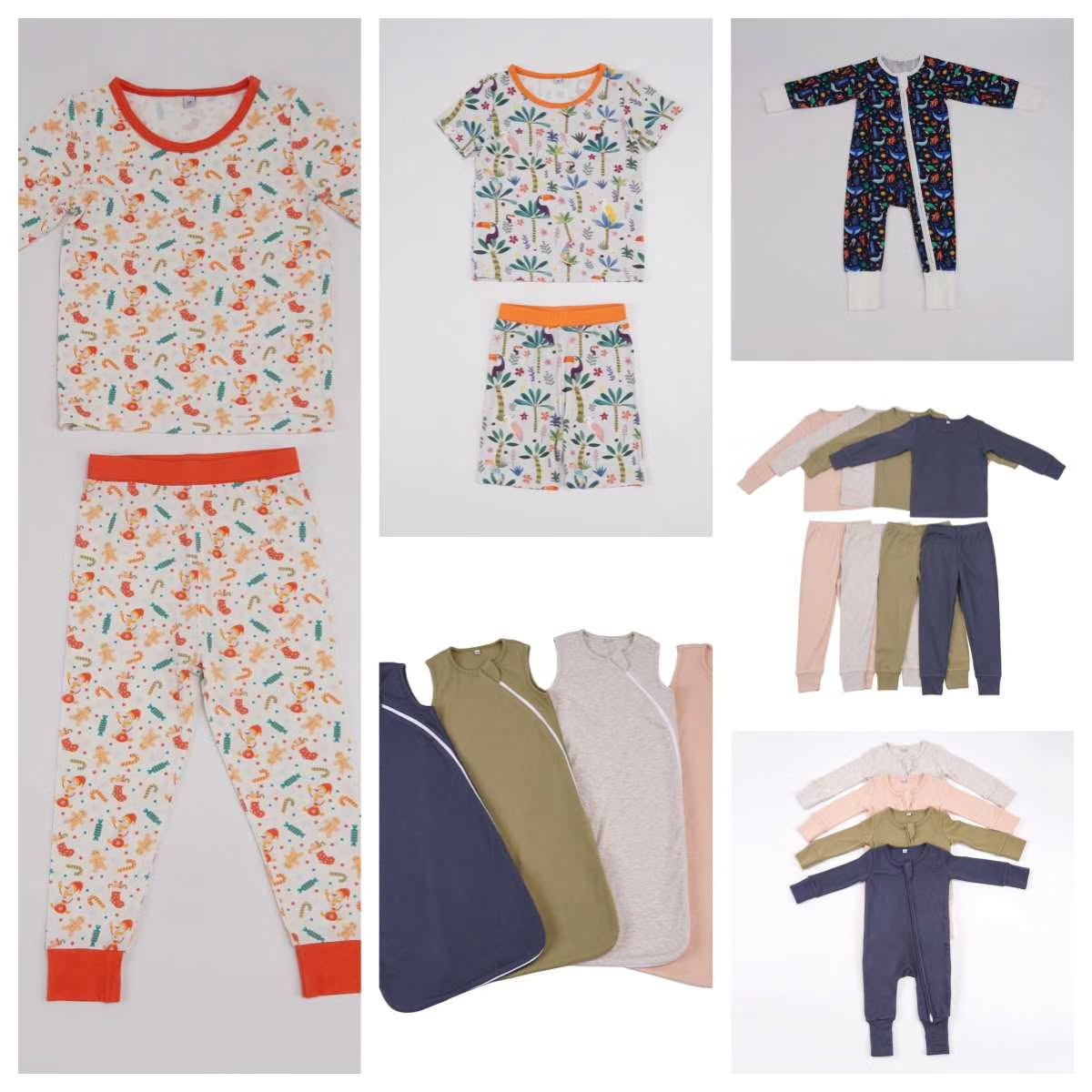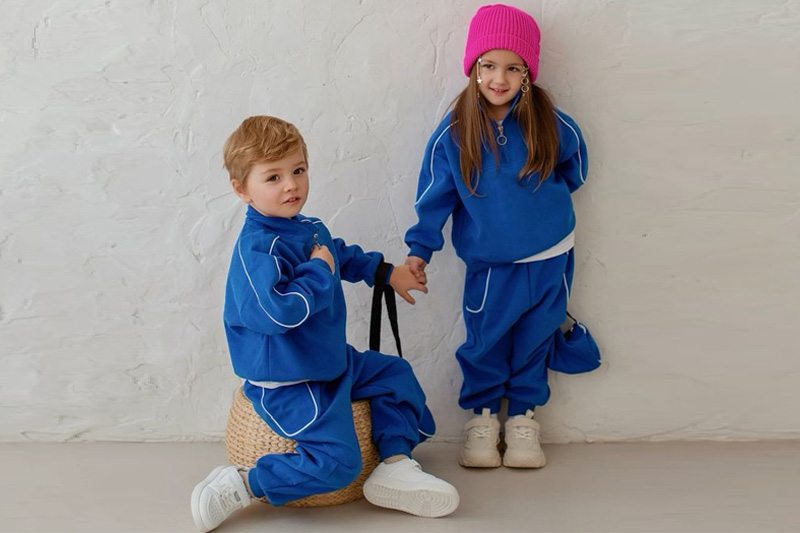Let’s be honest—when it comes to kids’ clothing, it’s not just about style. It’s about comfort, safety, and peace of mind. As someone who works with children’s apparel every day, I know one thing for sure: fabric matters. A lot. Choosing the right one can mean the difference between happy kids—and itchy, cranky ones.
The best fabrics for children’s clothing are skin-safe, hypoallergenic, and breathable. These qualities protect sensitive young skin from irritation, allow air circulation to keep kids comfortable, and reduce the risk of allergic reactions. Fabrics like organic cotton and bamboo often meet all three needs, offering softness and natural protection. Certifications such as OEKO-TEX or GOTS help buyers trust the fabric’s safety and quality.
As a brand that works closely with global buyers, I’ve seen how much trust depends on fabric choices.
Why should skin-safe fabrics be a top priority when designing for kids?
Think about how often a baby’s skin touches fabric—basically all day, every day. And their skin? It’s thinner, more delicate, and absorbs more than ours.
Skin-safe fabrics reduce the risk of rashes, irritation, and long-term discomfort in children. They are free from harsh dyes, toxic finishes, and rough textures that can harm sensitive skin. Prioritizing gentle materials builds a safe, trusted foundation for every garment.
When I first became a parent myself, I finally got why moms and dads ask so many questions about fabric. It’s not picky—it’s protective.
What does “skin-safe” really mean?
Let’s break it down:
- No toxic chemicals – That means no formaldehyde, azo dyes, or heavy metals.
- Soft to the touch – Especially around seams, collars, and waistbands.
- Smooth finishes – So nothing scratches or causes friction on delicate areas.
In our factory at Taian Lianchuang Textile Co., Ltd, we often recommend organic cotton for this exact reason. It’s not just buzz—organic fabric really does come without the harsh stuff.
Here’s a quick comparison:
| Fabric Type | Skin-Safe? | Common Issues |
|---|---|---|
| Organic Cotton | ✅ | Minimal |
| Polyester Blends | ❌ | Traps heat, may irritate |
| Bamboo | ✅ | Soft and antibacterial |
| Wool | ⚠️ | Can be itchy for babies |
How do hypoallergenic materials protect sensitive baby and toddler skin?
If you’ve ever seen a baby break out in little red bumps after wearing a new onesie, you know how frustrating it can be—for everyone involved.
Hypoallergenic fabrics are specially chosen or treated to minimize allergic reactions. They don’t contain common irritants, and they resist bacteria and dust mites, which can worsen eczema or allergies. For kids with sensitive skin, this is a game-changer.
One of our long-term customers in Germany once told me that a single rash-causing outfit cost them a year-long partnership with a boutique chain. That’s how serious it can get.
What makes breathable fabrics essential for children's all-day comfort?
Kids don’t sit still. Ever. That’s why they need fabrics that breathe—literally.
Breathable fabrics allow air to circulate around the body, which helps regulate temperature and prevent overheating. This keeps children comfortable whether they’re napping, running, or stuck in a car seat. Moisture-wicking and quick-drying properties also help avoid rashes caused by sweat.
If the fabric can’t breathe, the child can’t either. That’s a rule I stick to when helping new buyers choose materials.
Can natural fibers like organic cotton and bamboo meet all three needs?
Absolutely. These natural options are often the safest and most practical choices.
Natural fibers like organic cotton and bamboo are soft, breathable, and naturally hypoallergenic. They offer a perfect balance of comfort, safety, and durability, making them ideal for everyday kidswear. Plus, they’re biodegradable, which is a bonus for eco-conscious parents and brands.
I often recommend these fabrics to first-time buyers because they’re low-risk and high-trust. They tick all the boxes—without the headaches.
Comparing natural vs synthetic fabrics
| Property | Organic Cotton | Bamboo | Polyester |
|---|---|---|---|
| Skin-Safe | ✅ | ✅ | ❌ |
| Breathability | ✅ | ✅ | ❌ |
| Hypoallergenic | ✅ | ✅ | ⚠️ |
| Sustainability | ✅ | ✅ | ❌ |
| Durability (long-term) | ✅ | ✅ | ✅ |
And let me tell you—once you’ve held a bamboo onesie in your hands, you’ll feel the difference.
How do fabric certifications help parents trust a garment’s safety?
Let’s face it: trust is hard to earn, especially online or across countries.
Certifications like OEKO-TEX Standard 100, GOTS, and BCI prove that a fabric meets global safety and sustainability standards. These labels assure parents and retailers that the materials are free from harmful chemicals and safe for children’s skin.
One buyer from the UK told me she refuses to stock anything without OEKO-TEX labels—because that’s the first thing her customers ask about.
Popular Fabric Certifications
| Certification | What It Ensures |
|---|---|
| OEKO-TEX Standard 100 | No harmful substances in finished products |
| GOTS | Organic production + environmental responsibility |
| BCI (Better Cotton) | More sustainable and ethical cotton farming |
These aren't just logos—they’re trust badges. They tell a story your customer can believe.
Conclusion
When it comes to kids’ clothing, fabric isn’t just a detail—it’s the whole foundation. Safe, soft, and breathable materials aren’t optional; they’re essential.



